Fishing is an enjoyable outdoor activity for many, but do you know all the parts of a fishing rod?
Knowing what each part does will help you decide which type of rod best suits your needs.
In this article, I’ll cover the basics of “parts of a fishing rod” so that even novice anglers can feel confident when shopping for their next rod.
Short Answer: To understand parts of a fishing rod, get ready to find out all about blank holders, reels, line guides & more!
Table of Contents
- What is a fishing rod called?
- What makes up a fishing rod?
- 1) Parts of a Fishing Rod: Rod Tip
- 2) Parts of a Fishing Rod: Rod Guides
- 3) Parts of a Fishing Rod: Rod Blank
- 4) Parts of a Fishing Rod: Handle
- 5) Parts of a Fishing Rod: Reel Seat
- 6) Parts of a Fishing Rod: Butt Cap
- 7) Parts of a Fishing Rod: Hook Keeper
- FAQs
- Conclusion
What is a fishing rod called?
The fishing rod is a long, flexible pole designed to support and manipulate the fishing line using a reel. It has several parts that work together to help anglers cast their lines farther, detect bites more easily, and reel in fish efficiently.
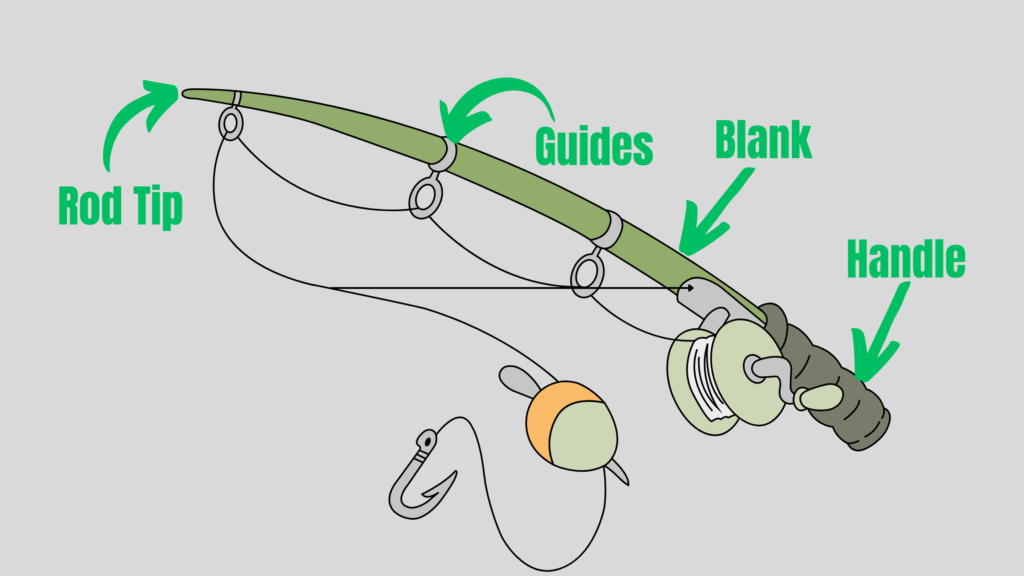
What makes up a fishing rod?
A standard fishing rod comprises several main elements: The rod tip, guides (or eyes), the blank (the pole itself), handle (also known as grip), reel seat (where you attach your reel), butt cap(end part), hook keeper (used for storing hooks safely) and ferrule(joiner for multi-piece rods).
Each element plays an essential role in ensuring that you have better control over your line and bait while giving you enough strength to fight against fish resistance.
Now that we’ve covered some general information, let’s take an in-depth look at each part separately.
Are you a beginner who looking to buy fishing rod, Here are my suggestion:
Here are the 7 different parts that make a fishing rod:
1) Parts of a Fishing Rod: Rod Tip
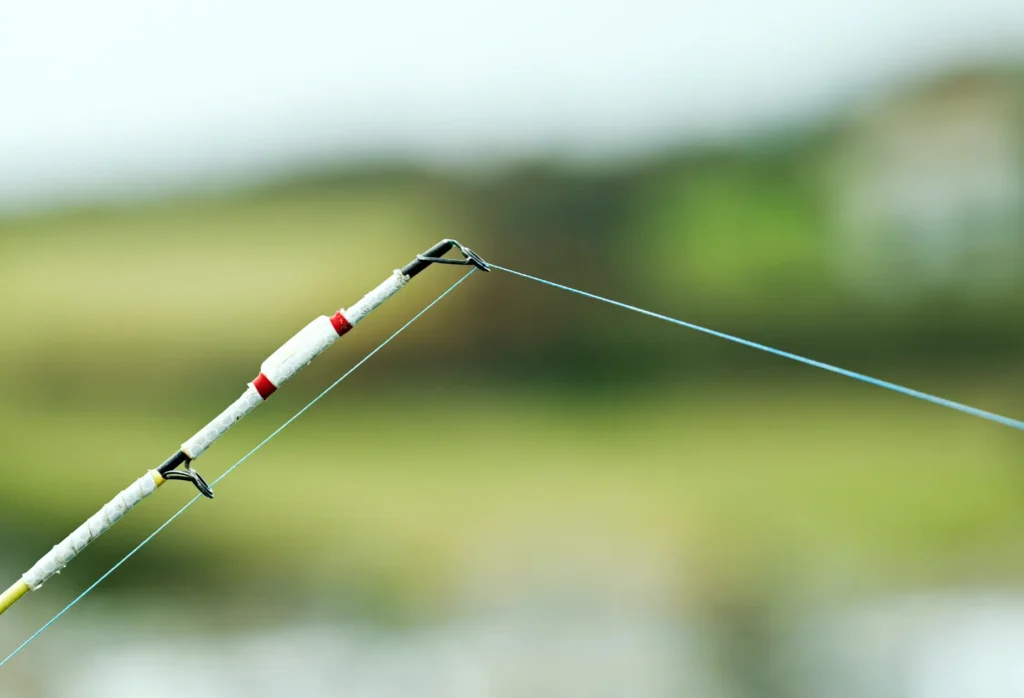
The rod tip is the uppermost section of a fishing rod.
It is the most sensitive part of the rod as it is responsible for detecting even the slightest movements made by fish.
The tip helps anglers feel when a fish has taken their bait or lure, allowing them to set the hook and reel in their catch. There are two types of rod tips: solid and tubular.
| A solid tip is more sensitive than a tubular tip, making it ideal for ultralight fishing, where every movement counts. | On the other hand, tubular tips provide more strength and durability, as they are more resistant to breaking under pressure. |
Materials Used in Making Rod Tips
Rod tips can be made from various materials depending on the type of fishing being done.
Some common materials used include
- ceramic,
- stainless steel,
- titanium,
- and plastic.
Ceramic-tipped rods are popular among anglers because they are highly durable and can withstand heavy use without breaking easily. They also provide excellent sensitivity when detecting bites.
Stainless steel tips are also commonly used as they offer great strength and elasticity, which allows for better control over your catch during retrieval.
Titanium-tipped rods have gained popularity in recent years due to their sensitivity and lightness. They offer excellent accuracy when casting your line while also providing adequate strength to reel in heavier fish.
Plastic-tipped rods are less expensive than other options and often used for beginner angling or light-duty fishing.
Different Types of Rod Tips:

There are several types of rod tips available on the market today:
Solid Tip: As mentioned earlier, these are ideal for ultralight fishing due to their high sensitivity.
Tubular Tip: These offer greater strength while still being sensitive enough to detect bites.
2) Parts of a Fishing Rod: Rod Guides
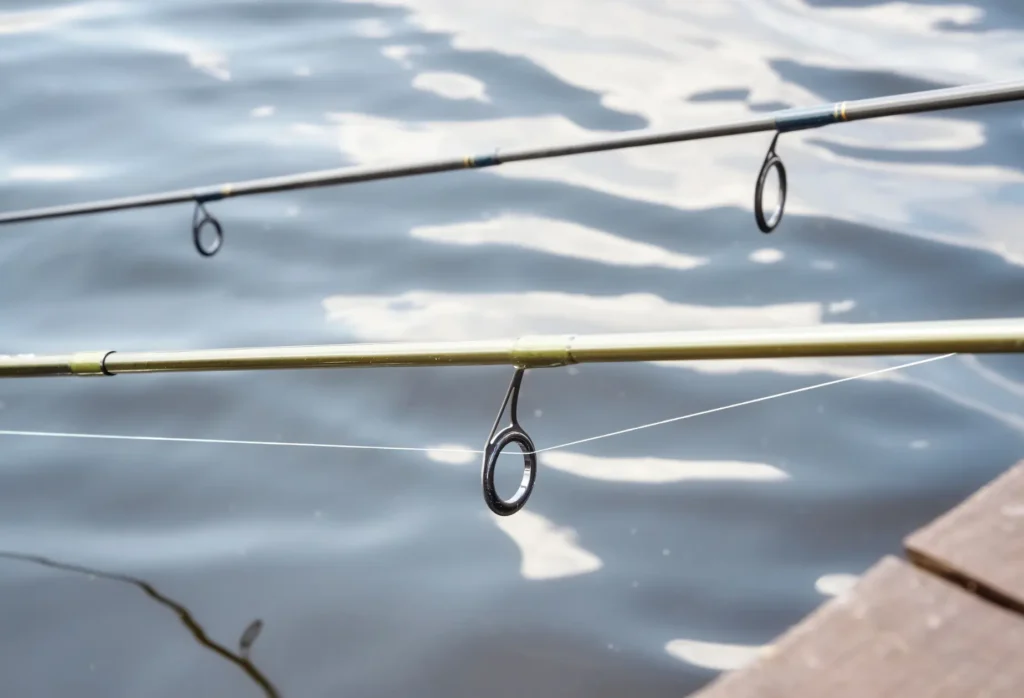
When it comes to fishing rods, rod guides are an essential component.
They are the rings or loops that run along the length of the rod and help guide the fishing line as it moves from the reel to the tip of the rod.
Without these guides, casting a fishing line would be impossible.
The primary function of rod guides is to ensure that the fishing line flows smoothly through them, enabling long and accurate casts with minimal resistance.
The guides also play an important role in protecting and reducing wear on both the fishing line and the rod itself, as they prevent them from rubbing against each other.
Materials Used in Making Guides
Guides are typically made from
- metal alloys,
- ceramic, or titanium.
The material used depends on the guide’s intended purpose and the manufacturer’s preferences.
Some prefer ceramic guides because they are lightweight and durable, while others choose titanium guides for their strength and resistance to corrosion.
The shape of the ring can also vary between flat or rounded shapes, depending on whether manufacturers want to reduce friction when casting or improve durability.
Types of Guides
There are three main types of guides: spinning, casting, and flying. Each type has its unique design features that suit a particular style of fishing.
Spinning Guides:
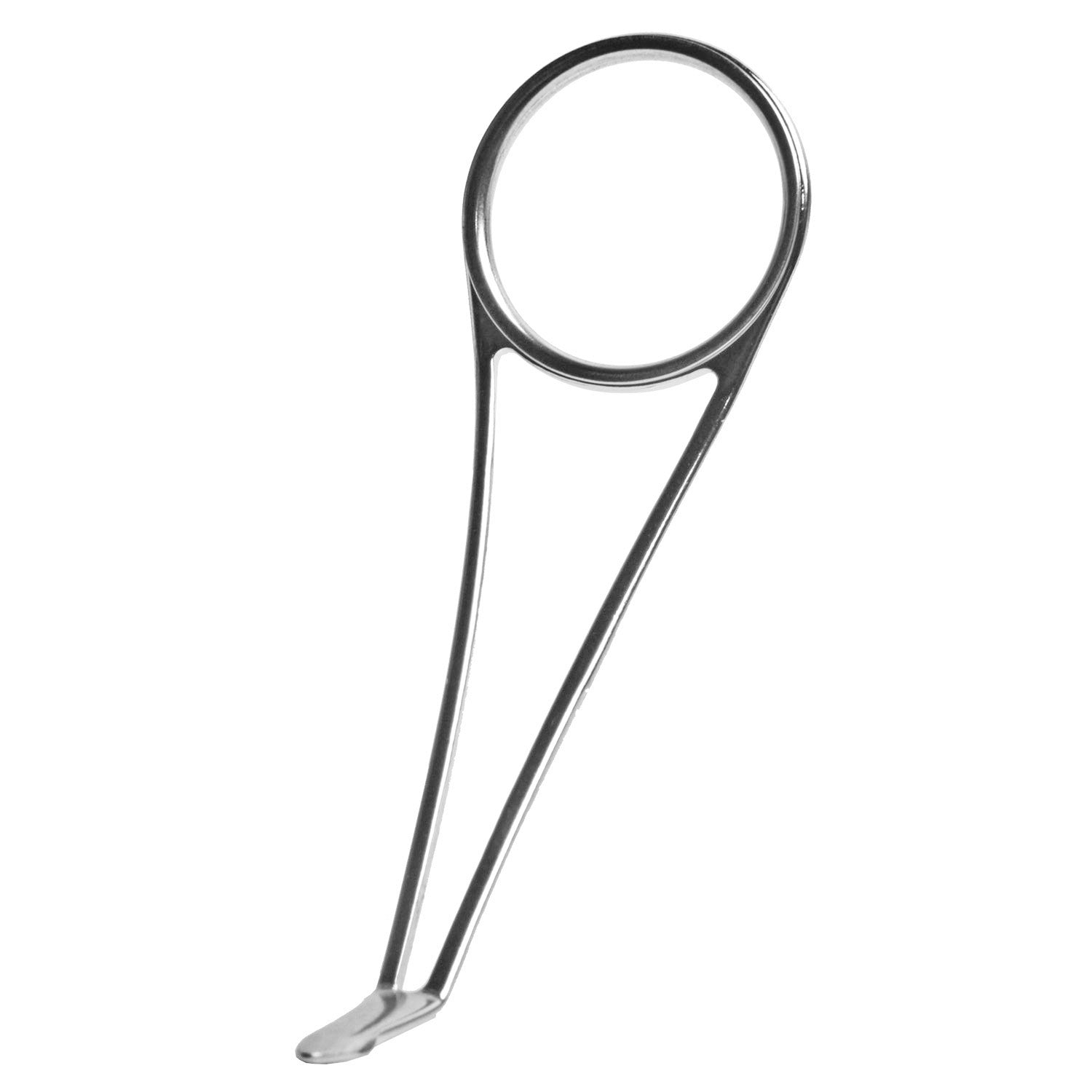
Spinning guides are typically smaller than casting or fly guides because they need to accommodate thinner lines used for spinning reels.
They have a simple design consisting of a ring attached to a small foot that runs along with the blank. The ring’s shape can vary between models depending on whether they aim for greater distance or more flexibility in their rods’ action.
Casting Guides:
Casting guides are usually larger than spinning guides because they need to accommodate thicker lines used by baitcasting reels.
They often feature an oval shape with a ceramic insert designed for maximum smoothness when casting heavier lures or baits at further distances.
Fly Guides:

Fly guides differ significantly from other types as they need to handle light lines typically used for fly-fishing techniques.
Unlike spinning or casting guides, fly guide feet may extend beyond their respective guide frames to provide additional support for the thin line. They may also have a unique design of larger rings and an elongated foot to help with casting accuracy when using heavy flies.
3) Parts of a Fishing Rod: Rod Blank
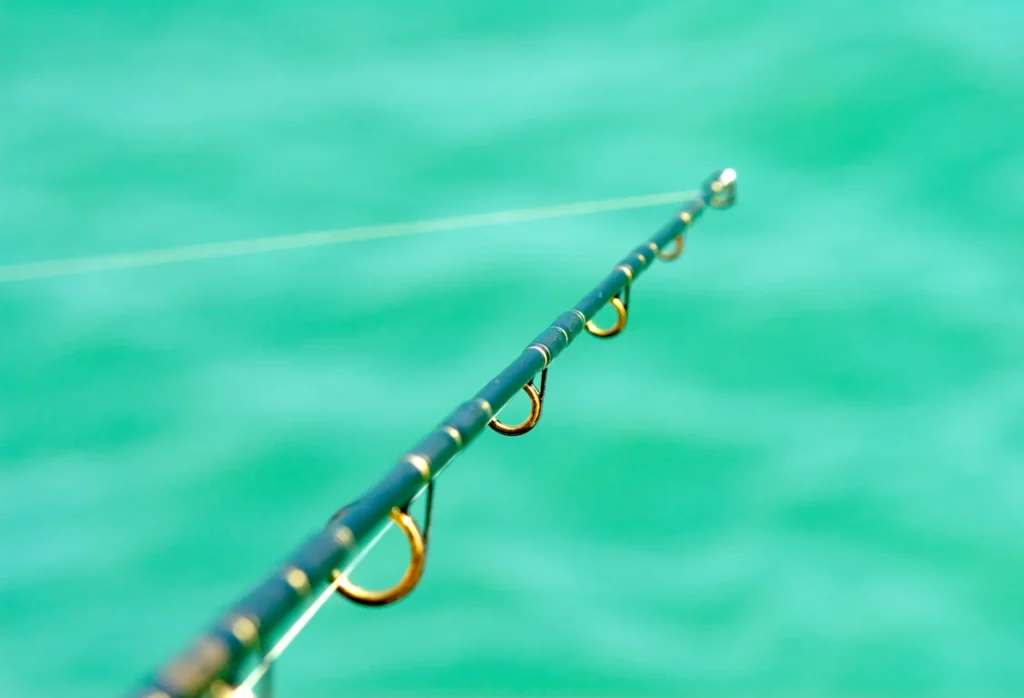
The rod blank is the most important part of a fishing rod, as it serves as the backbone or core of the entire rod.
It is a long, cylindrical shaft that runs from the handle to the tip of the rod. The blank determines the overall strength, sensitivity, and flexibility of the rod.
The purpose of a rod blank is to transfer energy from the angler’s arm to the fish. When an angler casts a line, they apply force on the handle, which then travels through the blank and into the line.
When a fish bites and pulls on the line, it creates tension that is absorbed by the blank.
This makes it important for anglers to choose a blank material that is strong enough to handle their target fish species while being sensitive enough to detect even subtle bites.
Materials Used in Making Blanks
There are two primary materials used in making blanks:
- graphite
- and fiberglass.

Graphite blanks are made from carbon fiber sheets that are layered together with an epoxy resin. The number of layers and thicknesses can vary depending on how stiff or flexible an angler wants their rod to be. Graphite blanks are known for being lightweight, sensitive, and responsive but can be more brittle than fiberglass.
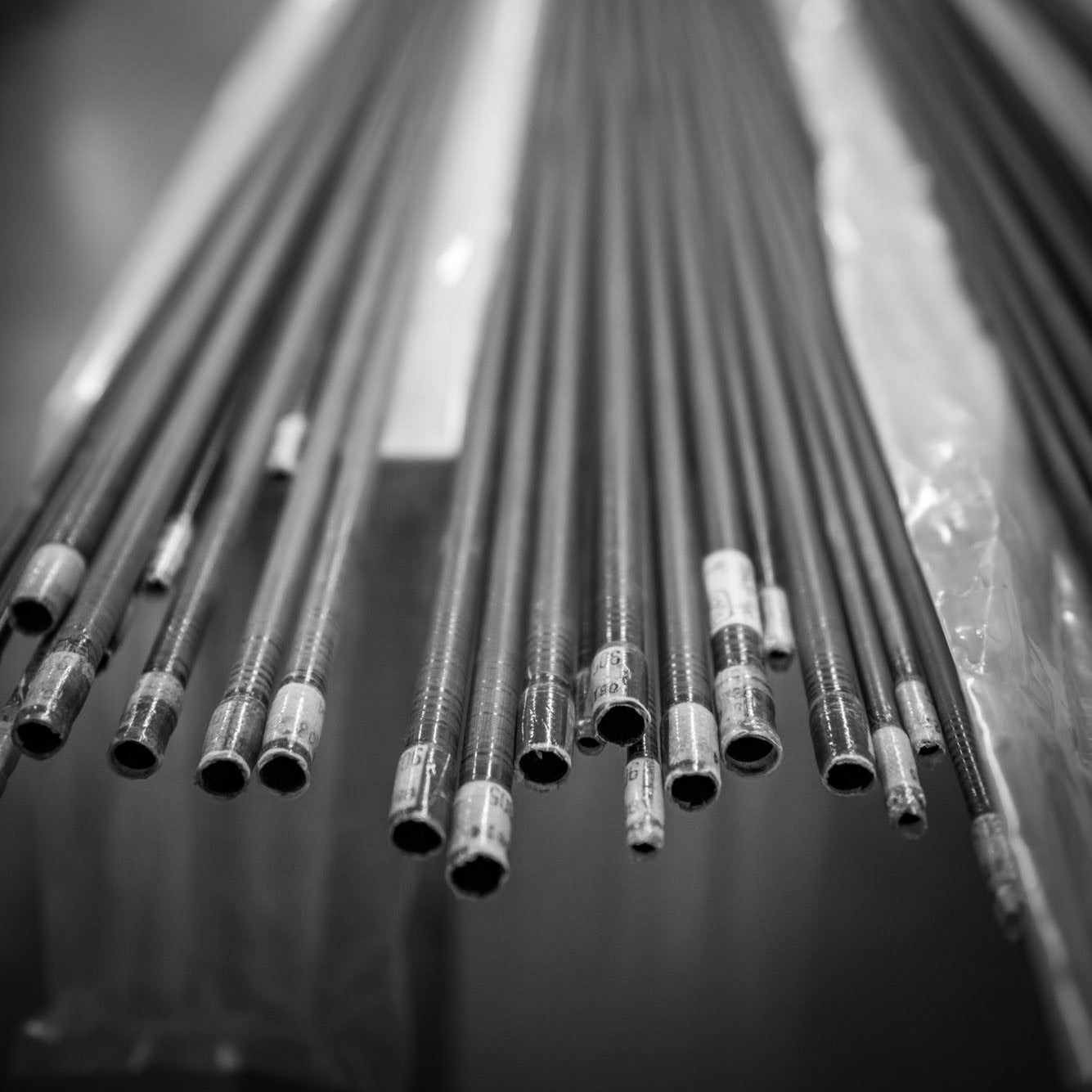
Fiberglass blanks are made by weaving glass fibers together with resin.They have more flex than graphite blanks which makes them ideal for catching small fish species such as trout or panfish but may not be strong enough for larger species like tuna or marlin.
In recent years, composite blends have become popular because they offer benefits from both materials.
Different Types of Blanks (Graphite vs. Fiberglass)
Both graphite and fiberglass come in various types – each with its own set of advantages depending on what type of fishing you plan on doing.
- Graphite Blanks
- IM6 Graphite: intermediate modulus graphite
- IM7 Graphite: high-modulus, high-strain graphite
- IM8 and IM9 Graphite: highest-modulus graphite available; very strong, fast action, and sensitive fiberglass Blanks:
- S-Glass Fiberglass: lightweight with a fast action; ideal for catching smaller fish
- E-Glass Fiberglass: heavier than S-glass with a slower action; recommended for casting heavier lures or baits
4) Parts of a Fishing Rod: Handle
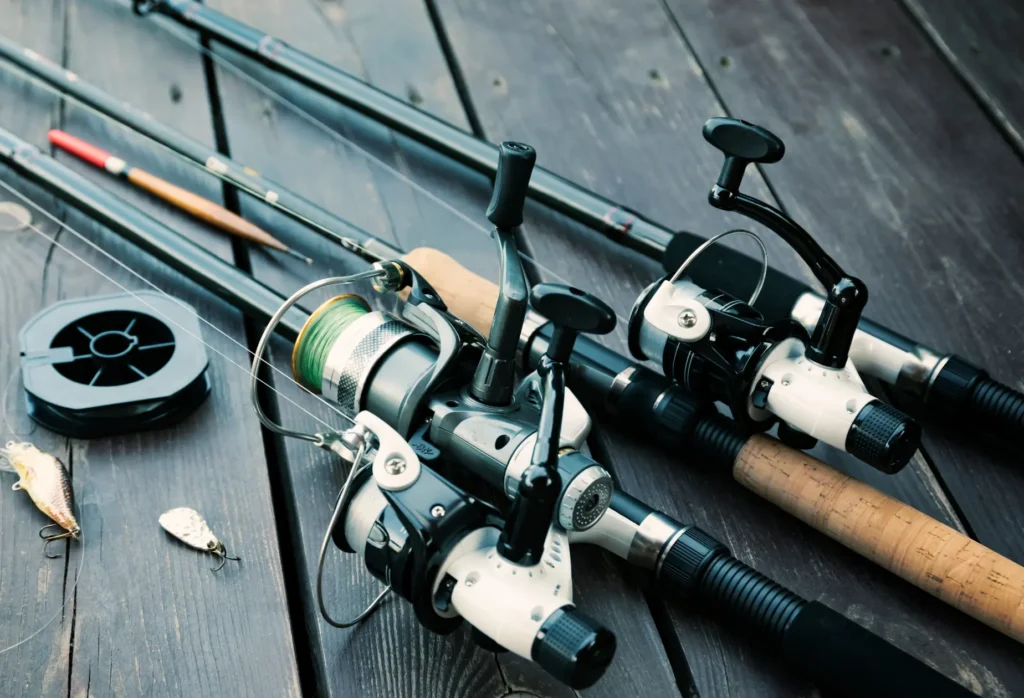
Fishing rod handles serve as the grip for anglers and also help control the overall balance of the rod.
A well-designed handle increases an angler’s comfort level during prolonged fishing periods and improves overall accuracy when casting. Handles are typically located at the bottom of a fishing rod.
The primary purpose of a handle is to provide the angler with a stable grip while fishing, which allows them to control their cast and retrieve efficiently.
An ergonomically designed handle can improve an angler’s comfort level, reduce hand fatigue, and improve their overall performance while fishing. The length of the handle is also crucial as it affects how much leverage an angler can produce.
Different Types of Handles (Cork, EVA Foam)
Different materials are used in constructing fishing rod handles, each with its unique properties.

Cork is a popular material for high-end rods because it’s lightweight, durable, and provides superior grip even when wet. Cork is one of the most popular materials used in making fishing rod handles because it’s soft to the touch but provides excellent grip even under wet conditions.

EVA foam is another popular material due to its affordability and excellent shock-absorbing properties, making it ideal for heavy-duty saltwater rods. EVA foam handles are an affordable option that offers great durability that can withstand harsh environmental conditions such as saltwater exposure or UV rays from sunlight.
Other materials used in creating handles include rubber, composites like Hydrolite, Hypalon, or nylon fiber-reinforced plastic (FRP), which offer varying degrees of durability against wear and tear.
5) Parts of a Fishing Rod: Reel Seat
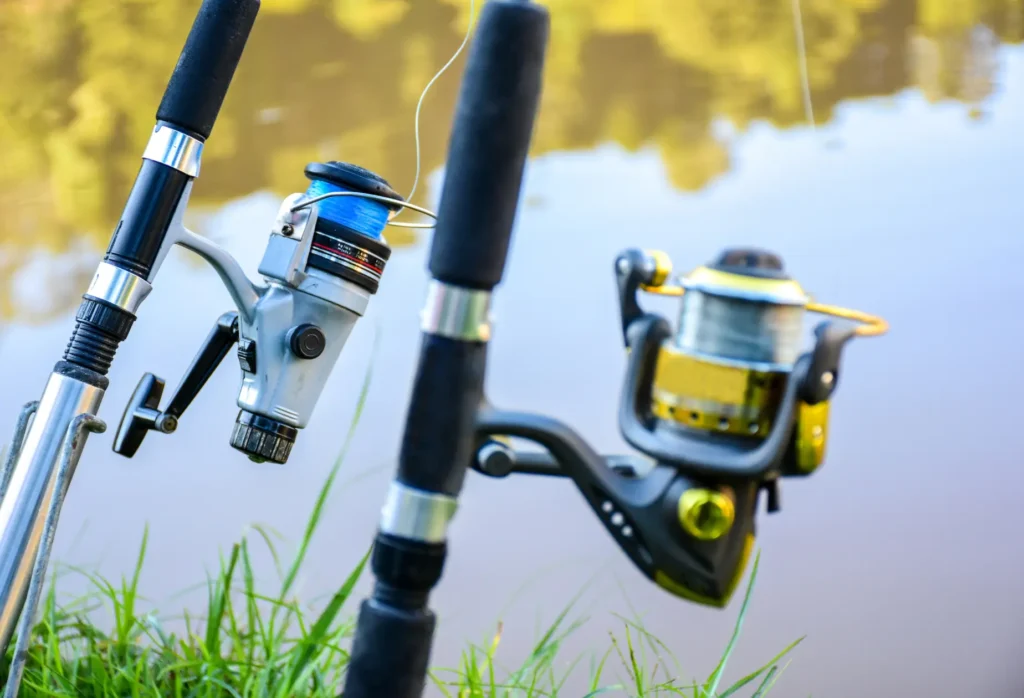
The reel seat on a fishing rod is the component that holds the reel in place.
It is located near the handle of the rod and allows for easy attachment and removal of the reel.
The purpose of a reel seat is to provide anglers with a secure and comfortable way to hold their reels while fishing. In addition, it must be sturdy enough to handle the weight of the reel without breaking.
Different Types of Reel Seats
There are several different types of reel seats available on modern fishing rods.
Some reels have fixed seat designs that cannot be moved up or down along the rod blank, while others have sliding rings or mechanisms that allow for easy adjustment.
One type of fixed-seat design is called a slip-on style which simply slides onto the butt end of the rod blank, where it locks into place using friction or adhesive forces provided by epoxy gluing agents.
Another type is called an adjustable “screw-up” style which uses threaded adjustments that screw into place so anglers can adjust them at will based on their specific needs.
Fly fishing rods often utilize unique designs, such as skeletonized versions with small locking cuffs screwed directly into cork handles without any additional attachment mechanisms or other variations that provide more flexibility and adjustability than other types of fishing rods.
6) Parts of a Fishing Rod: Butt Cap
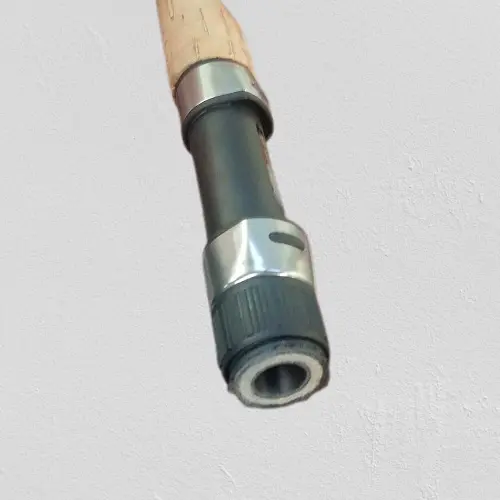
The butt cap is located at the very bottom of the fishing rod, opposite the rod tip.
Its purpose is to provide protection for the rod and to give a finished look to the overall design. The butt cap also provides additional grip and stability when using a fighting belt or harness.
In addition to its functional purposes, some anglers choose their butt caps based on aesthetics.
Butt caps come in various colors, materials, and designs that can complement or contrast with the look of the rest of the fishing rod.
Materials Used in Making Butt Caps
Butt caps can be made from a variety of materials, including
- rubber,
- plastic,
- steel,
- aluminum,
- and cork.
Each material has its own advantages and disadvantages.
Rubber butt caps are popular because they provide a comfortable grip while also being durable enough to withstand wear and tear.
Plastic butt caps are lightweight but can crack easily if not made from high-quality materials.
Steel and aluminum butt caps offer good protection for the rod but are heavier than other materials, which can result in fatigue during long periods of use.
Cork butt caps are comfortable but may not offer as much protection as other materials.
Creative Design Options for Butt Caps
While most anglers choose their butt caps based on functionality over style, there are many creative design options available that can add personality to your fishing gear.
Some anglers like to customize their rods with decals or artwork applied directly onto their butt cap surface.

Others prefer unique shapes or patterns that align with their personality or interests – such as animal prints or sports team logos.
Ultimately, selecting a high-quality butt cap comes down to balancing both functionality and personal preference. With so many options available on today’s market – it’s easy to find one that fits your needs precisely!
7) Parts of a Fishing Rod: Hook Keeper
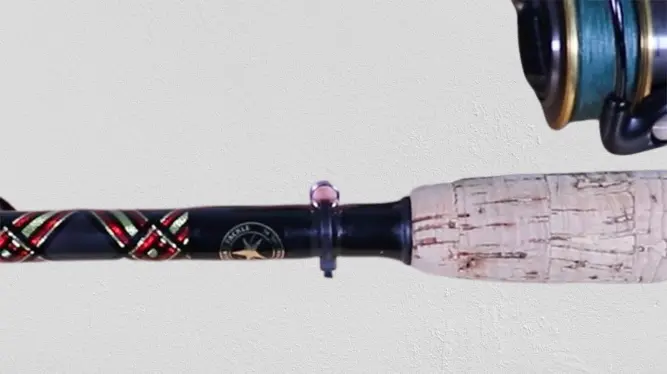
The hook keeper is a small loop or clip located on the fishing rod that is used to hold the hook in place when not in use.
It’s an essential part of any fishing rod because it helps prevent the hook from getting tangled in the line or damaging other parts of the rod.
The hook keeper also keeps the hook easily accessible, so you can quickly and easily start fishing again after changing lures.
Types of Hook Keepers
There are several different types of hook keepers, each with its own unique benefits and drawbacks:
Rubber Hook Keepers:
Rubber hook keepers are one of the most popular types because they are easy to use, durable, and relatively inexpensive.
They usually consist of a small rubber ring that slides onto the rod near the handle and holds the hook in place. Rubber hook keepers work well for most types of hooks, including treble hooks and single hooks.
Magnetic Hook Keepers:

Magnetic hook keepers use magnets to hold hooks securely in place. They are easy to attach and detach from rods, making them a popular choice for anglers who frequently change their lures.
Magnetic hook keepers can be more expensive than rubber ones but provide an extra level of security for your hooks.
You may also like to know:
- How To Transport Fishing Rods In a Car
- How To Store Fishing Rods In Garage?
- Different between fly fishing and regular fishing rod
- Where to donate fishing equipment
FAQs
What is the most important part of a fishing rod?
The most important part of a fishing rod is the rod blank, which provides strength and flexibility.
What are the parts of a fishing rod called?
The parts of a fishing rod are commonly referred to as the handle/grip, reel seat, guides, and the tip/top section of the rod.
What is the end of the fishing rod called?
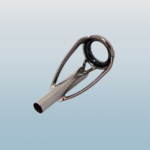
The end of a fishing rod is called the rod tip. The rod tip includes the guides that hold the fishing line and the tip top at the very end. It’s flexible to cast lures and detect bites. A good rod tip transfers energy to play and land fish.
What are the rings on a fishing pole called?
The rings on a fishing rod are called guides or guide rings.
What is the bottom loop on a fishing rod for?
The bottom loop on a fishing rod is called the reel seat, which is used to secure the fishing reel in place.
What are other names for a fishing rod?
Fishing rods are also known as fishing poles, poles, or rods and reels.
Conclusion
Learning the parts of a fishing rod doesn’t have to be intimidating; as long as you know what all the details on your pole mean and how to use them, then you’re ready to join the ranks of happy fishers!
With its versatile design, any level of angler can make use of the reel, rod blank, guides, and more to experience the thrill of reeling in that next big catch.
